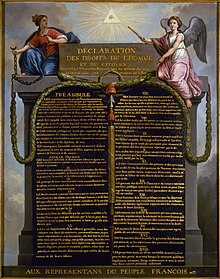.
Minister for Injustice Ireland Shatter defended Israel’s brutal 2009 invasion of Gaza. He opposed the “freedom flotillas” organized in 2010 and 2011 to breach the Israeli blockade of the already impoverished Gaza strip, although each of the aid expeditions included a ship from Ireland .He has opposed visas for members of organizations hostile to Israeli policies, and resoundingly condemned calls for the Irish to boycott performances in Israel as “cultural fascism.”
Shatter has not merely parroted Israel’s justifications for oppressive policies aimed at preserving Israel as a Jewish state for a Jewish people, he has in effect served as a second Israeli ambassador to Ireland, functioning without the diplomatic constraints of the former.
We may take it, then, that Ireland’s Jewish minister of Injustice is moved by something other than an abstract sense of fairness that, however misguidedly, invites the world’s “wretched refuse” (as a very influential tribune of indiscriminate immigration once called it) to Ireland’s shores. Seen in the light of his dedication to a dogma that the United Nations General Assembly once declared racist, Shatter’s promotion of Third World immigration, as well as his long career as a lawyer promoting birth control, abortion, and gay marriage—takes on a more sinister hue, as do such recent initiatives as his condemning Ireland’s national television network for failing to depict today’s “intercultural Ireland” rather than the homogeneous Irish people of decades past.
In other words, Shatter has at best dual loyalties—but his double standard on Israel and Ireland would seem to indicate that his loyalty is primarily, if not exclusively, to the Zionist state rather than the Emerald Isle. What factor his Jewish loyalties play in promoting an immigration that is at most minimally Jewish, yet increasingly non-White, to the land of his birth remains an unanswered, though provocative, question. Nevertheless, Shatter’s attitudes are entirely in sync with those of the organized Jewish diaspora communities throughout the West. As often noted in TOO (see also here, p. 241ff), Jewish attitudes on immigration in the West are best explained as Jewish ethnic strategizing motivated by hostility toward the traditional people and culture of the West because of historical anti-Semitism (e.g., Shatter’s construction of Ireland’s role in the Holocaust) combined with fear that ethnically homogeneous populations may eventually rise up against Jews.
Alan Shatter is also Ireland’s minister of defence. In that role, he has announced that Ireland will continue to buy arms from Israel. As one of his critics has observed, “It is not unusual for a Defence Minister to be steeped in nationalism, but for the ‘nation’ in question to be a foreign state, and a rogue state at that, must be unprecedented.”
It’s hard to imagine the mirror image of Alan Shatter in Israel. Just imagine one Alan O’Slattery, devoted to promoting non-Jewish immigration to the Zionist state and putting the military and diplomatic needs of Ireland above those of the nation he serves, wielding comparable power in Israel!
But it’s not so difficult to imagine Alan Shatter finding a ministerial role in yet another country. In the eyes of John McCain and Lindsay Graham, Shatter might well be eminently more qualified to serve as U.S. Secretary of Defense than Chuck Hagel. After all, Hagel has the wrong loyalties, and Shatter has the right ones.

















